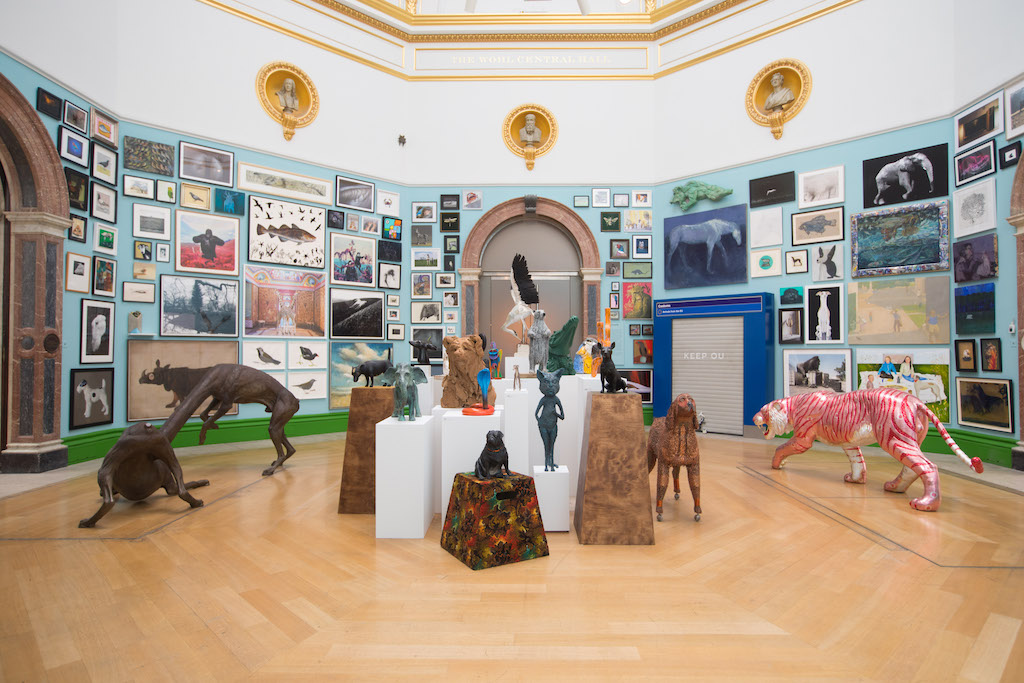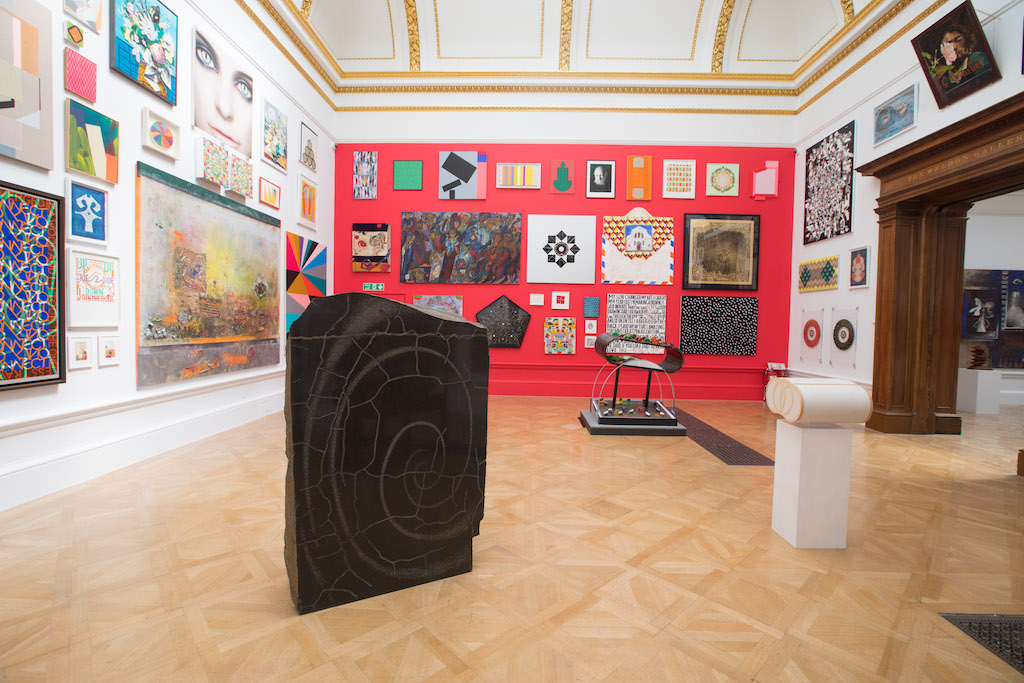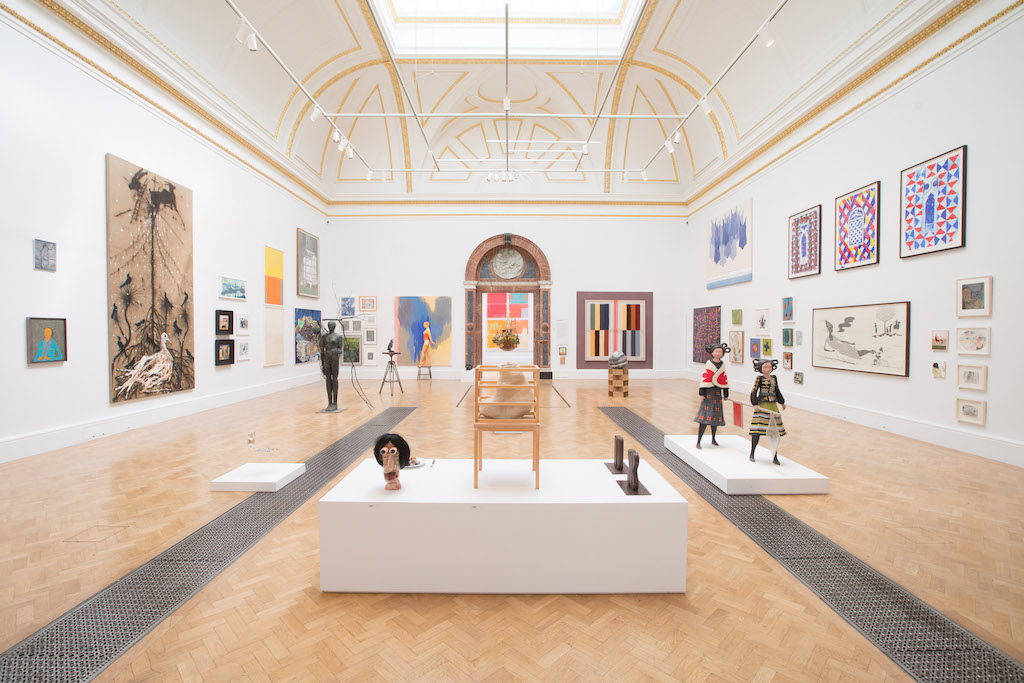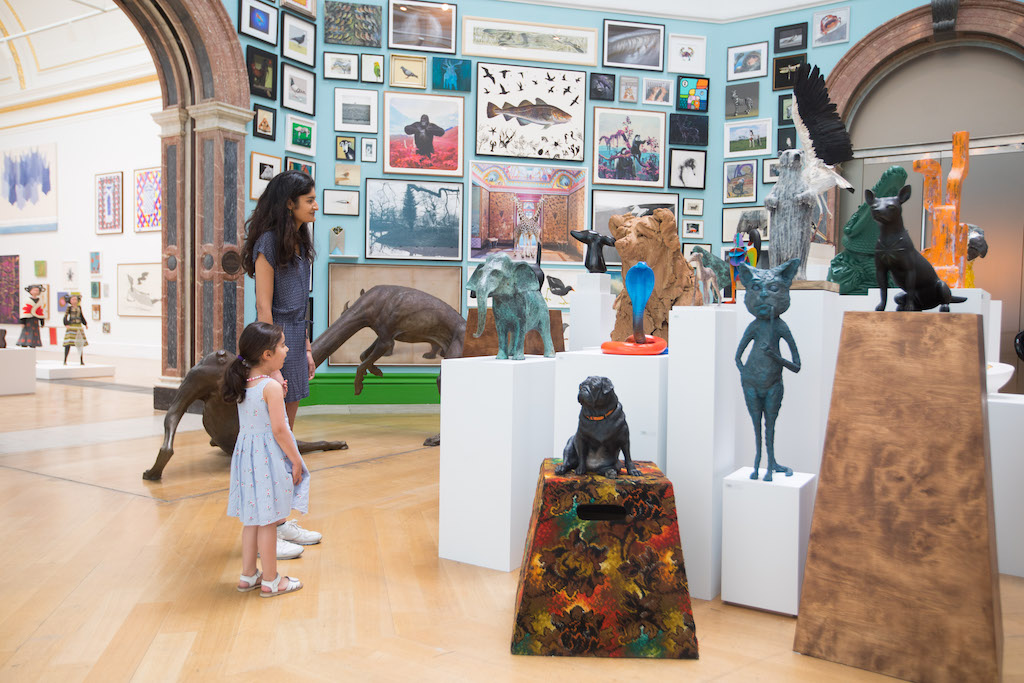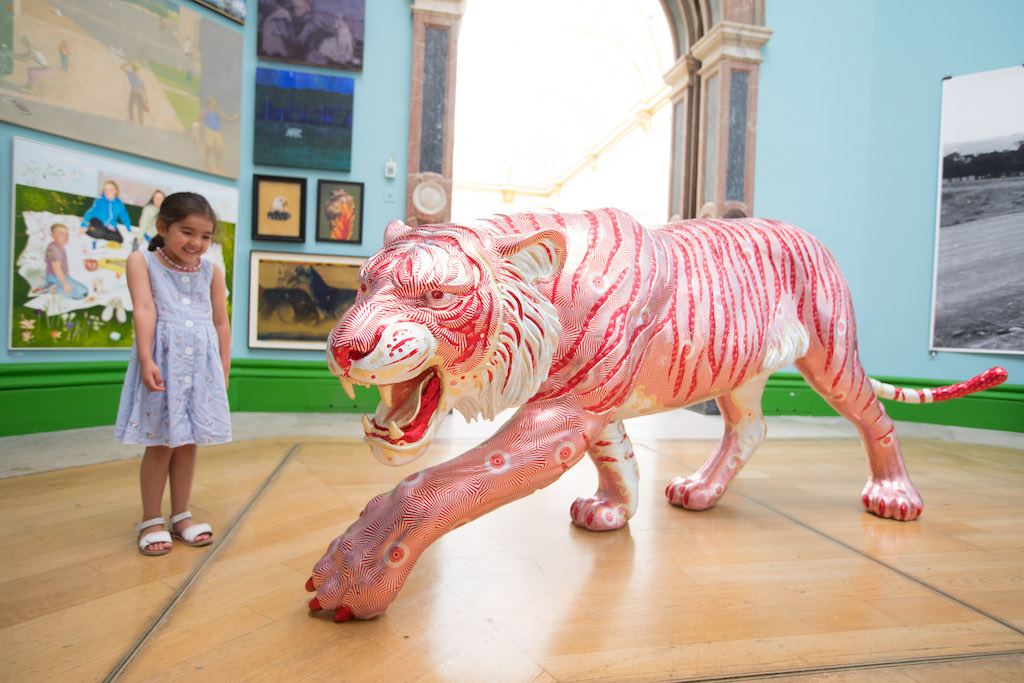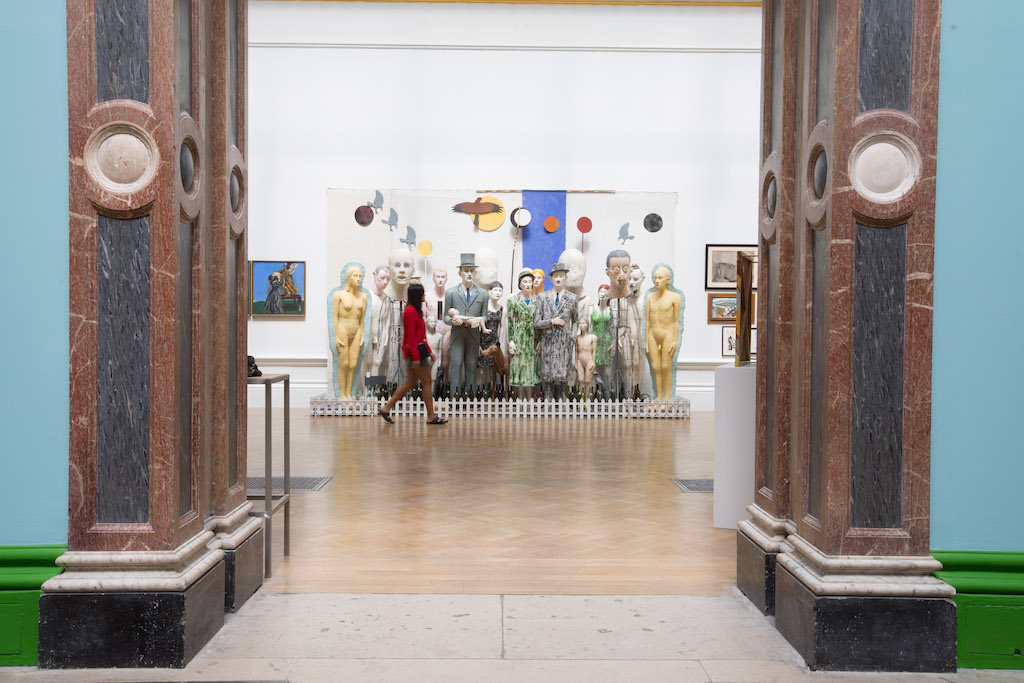Review: The Royal Academy’s Summer Exhibition 2019
What to look out for...
This post may contain affiliate links. Learn more
Will the vision of sighted people at the Summer Exhibition be altered, improved and changed by their encounter with the blind artist guide? asks Caroline Phillips
“And on the left there’s a fake customs booth. It’s got ‘Customs Arrivals from the EU’ and ‘Keep Ou…’ written on it, with the ‘T’ missing,” says a guide, leading a man with a white stick around the galleries. We’re at the Royal Academy Summer Exhibition. The sightless man, it turns out later, is blind artist David Johnson. And the customs booth is a Banksy, about which more later.
Johnson is going to be leading a curated 30-minute tour of five works from this year’s exhibition on 4th July. (Is the symbolism intentional in choosing Independence Day for a tour by a blind artist?) I follow the —at that point anonymous — sightless man and his guide into the next room, where the former is saved the visual cacophony that greets us.
“There are a number of quite large paintings in this room, as there always are,” the guide informs Johnson. We’re in Gallery III, the RA’s biggest space. Here photography and painting are mixed in what’s dubbed a ‘retinal hang’ (meaning pleasing to the eye, apparently) by British painter Jock McFadyen, the co-ordinator of this year’s exhibition. The coordinator gets the grandest space, so McFayden hung this room.
There are oils, photographs, abstract and figurative works, medium, small and very big pieces from dado rail to nearly-cornice: as is often the case in the Summer Exhibition, the overall effect is overwhelming for those privileged to have the sight of both eyes, although McFayden has cleverly anchored the pieces with a large work in the middle of each wall. But I wouldn’t want to be an artist with a small painting near the ceiling, among the hundreds of works in this room.
David Hepher’s —price tag £90,000; the majority of works are for sale —acrylic council housing block, ‘Hey Wayne on the Meath Estate’, (an ironic nod to Constable’s Hay Wain; tower blocks to Hepher are what the Stour Valley was to Constable) is one example of a large work from which the rest radiate. It’s a strong piece —a bit like looking out of the window at a council block —with graffiti of ‘Hey Wayne’ daubed across it.
Then there’s Anselm Kiefer’s haunting and desolate wasteland, another large painting as the centrepiece on a different wall. It’s the most striking artwork in the show, reminds me of a war-ravaged landscape, and the price tag is ‘NFS’. (Well, that saved someone some money then.)
“Fünf jahre lebte Vainamoinen auf der unbekannten insel auf dem baumlosen land,” says Johnson’s guide, struggling to read the words painted across the top of Kiefer’s emulsion, oil, acrylic, shellac, charcoal and chalk work. Google translate tells me that means that, ‘Five years ago, Vainamoinen lived on the unknown island on the treeless land.’ Oh, and another quick search reveals that Vainamoinen is a Finnish demigod.
The Summer Exhibition is the world’s largest open submission contemporary art show, selected on merit. McFadyen had to lead the committee in choosing 1500 works from 16,000 entries from all over the world, which must have been like being a (recently-fed) Kenyan lion sitting in the bush during the Great Migration to select which wildebeest have the best running style. The art entries are in different genres and media: from architectural models to video, prints to sculptures. Emerging and emerged artists. Tracey Emin and Wolfgang Tillmans to almost-knowns and unknowns.
There’s a ‘menagerie’ in the main hall of animals domestic, wild and cute. From a large photo of stray dogs in Mvezo, Mandela’s birthplace to a tiger burning bright with its covering of glittering red, chocolate- marshmallow wrappers. There’s a room of architectural models exploring the theme of sustainability and the environment, curated by Spencer de Grey. (Environmental concerns and Barbara Rae’s trips to the melting ice caps of Greenland provide cool respite from the mad inundation of the other galleries.) And a gallery space showcasing light and time-based work. Plus Thomas Houseago shows a group of sculptural giants overlooking the Academy’s suddenly weeny-seeming statue of Joshua Reynolds, which has stood in the courtyard since 1931. Each room is curated by a different Royal Academician.
So back to that Banksy, ‘KEEP OU…’: the customs booth with the closed shutter. It focuses on immigration, economy and national sovereignty. It features a rat sitting at the bottom of the shutter door, having broken the (now-open) padlock, hacking it with the letter ‘T’. The witty work encapsulates the tone of an exhibition that reflects the politics and concerns of our world. Rodents breaking through immigration, eh? And in another room there’s a Jeremy Deller flag emblazoned, ‘We are all immigrant scum.’ From immigration to the environment, with a few animals thrown in to cover all bases.
Aside from the moment of spiritual connection with the Kiefer, that which really stays with me is the poignant experience of watching Johnson, a blind person (who ironically produces visual art) touring the exhibition. Once sighted, he may have lost his experience of colour and spatial awareness but he’s reportedly got a new perspective on the world and is more concerned with the communality between blind people and others, rather than that which divides and separates them.
Will the vision of sighted people at the Summer Exhibition be altered, improved and changed by their encounter with the blind artist guide? Will he offer the sort of psychological, conceptual and philosophical repositioning that his loss of sight has afforded him? How will he introduce visitors to works that he cannot even touch? Good art should make you think or stir the emotions, or both. For me, a blind artist did both. Without his presence, I would, largely, have experienced retinal overload with this exhibition.
As a footnote…. If you like your art al fresco, the Summer Exhibition will spill out onto the streets of London’s West End. Sir Michael Craig-Martin will decorate Bond Street with an installation of flags displaying his artwork. And there will be art-inspired windows in high fashion and fine jewellery shops, plus showcases and pop-ups.
The Summer Exhibition runs from 10 June – 12 August 2019
020 7300 8090; royalacademy.org.uk
Royal Academy of Arts, Burlington House, Piccadilly, London, W1J 0BD
Adult tickets £18; concessions available; under 16s go free
The art installations on Bond Street run from 10-24 June
DISCOVER MORE
The Best Art Exhibitions in London / The Best Art Books to Buy

